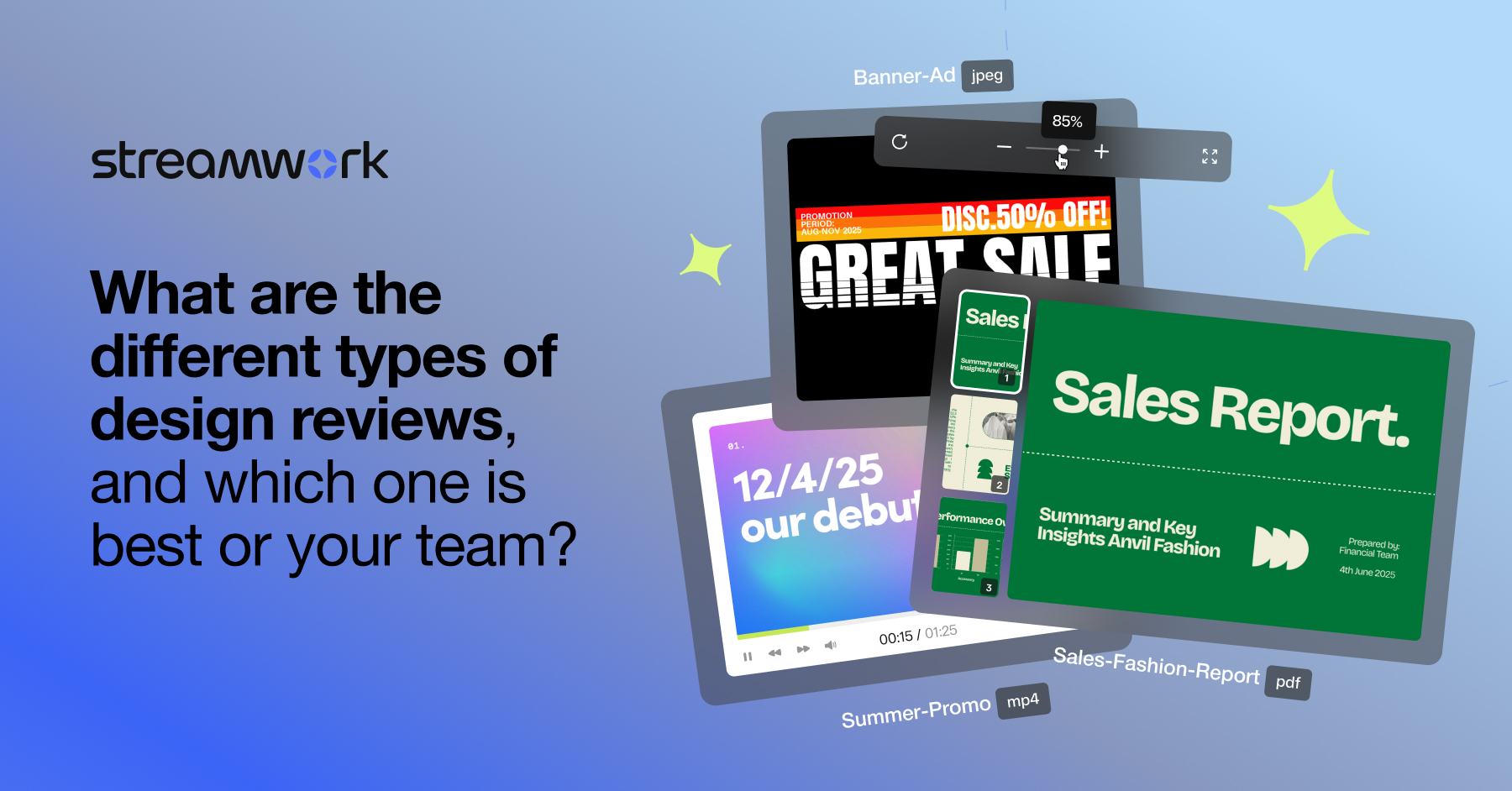Let’s go over the key types of design reviews that you’ll typically see during the development of a creative project:
- Peer Review — Throughout the creative process, peer reviews offer an informal way for designers, copywriters and other creatives to review work-in-progress and provide feedback. It’s a collaborative space to refine ideas, catch inconsistencies and keep your work aligned with project goals.
- Stakeholder Review — Once the creative is polished, it’s time to share it with stakeholders from other departments—like marketing managers, product leads or legal teams. These reviews ensure that the creative not only looks great but also meets business goals, complies with regulations and fits the overall campaign strategy. It’s all about bridging the gap between creative vision and brand needs.
- Final Review — These are the final checkpoints before assets go live. Whether it's a client in an agency setting or senior leadership in-house, this review focuses on big-picture alignment and sign-off. At this stage, feedback tends to be high-level, so the more organized and clear the previous rounds of feedback were, the smoother this one will be.
What is the purpose of each type of design review?
Creative projects need all three types of design review — not just one — because each stage brings a different layer of insight and value. Peer reviews help polish the details and strengthen the creative foundation, while stakeholder reviews add strategic and cross-functional alignment. Final reviews ensure the final work meets expectations at the highest level. Skipping any of these steps can lead to missed feedback, misalignment or last-minute changes that slow things down. Together, they create a well-rounded, efficient review process that sets the work up for success.
How do design reviews fit into workflows?
Design reviews are a natural part of the larger creative process, acting as structured moments to pause, assess and refine the work. They fit between key stages like concepting, production and final delivery, making sure each step builds on a strong foundation. Rather than slowing things down, reviews help teams stay focused and aligned, reducing the need for major rework later. They also create space for collaboration, which leads to more thoughtful and effective creative outcomes.
In the broader approval workflow, design reviews serve as checkpoints that keep the project moving in the right direction. Each round of feedback brings the asset closer to final approval, whether it’s for a campaign launch, a social media rollout, or a client presentation. By breaking the process into manageable steps, reviews help teams gather feedback efficiently and stay on schedule. When built into the workflow from the start, design reviews support both creative quality and operational clarity.
Example of multi-stage review in a marketing agency workflow
In a typical agency environment, projects don’t go straight from concept to final delivery in one shot. Instead, they move through several approval stages, each one refining the work, collecting important stakeholder feedback, and making sure everything stays on-brand. Let’s look at a real-world example to illustrate how that process comes together.
Imagine an agency developing a branding campaign for a new product launch. The process kicks off with peer reviews, where the team refines the visual identity, messaging and campaign concepts before sharing anything outside the creative group. Once the initial assets are polished, they move into a stakeholder review stage, where the marketing lead, product manager and legal team provide feedback to ensure the work aligns with business goals, brand guidelines and compliance requirements. After making necessary updates, the content goes through a final review with senior leadership or the client. This review is high-level, looking at big-picture alignment and providing final input before sign-off.
The role of automated and multi-stage approval workflows
Modern marketing and creative teams are increasingly using multi-stage, design review workflows with platforms like StreamWork to keep projects moving smoothly. With automated approvals, centralized feedback and version control, each stage of review becomes more efficient and easier to manage. Clearly defined steps and responsibilities helps teams avoid bottlenecks, cut down on revision cycles and keep momentum strong from initial concept to final delivery.
In short, understanding the different types of design reviews — and building streamlined workflows — helps you deliver high-quality creative that’s on time, on-brand and compliant. With intuitive tools like StreamWork, agencies can simplify the approval process, improve collaboration, and get better results with less stress.


